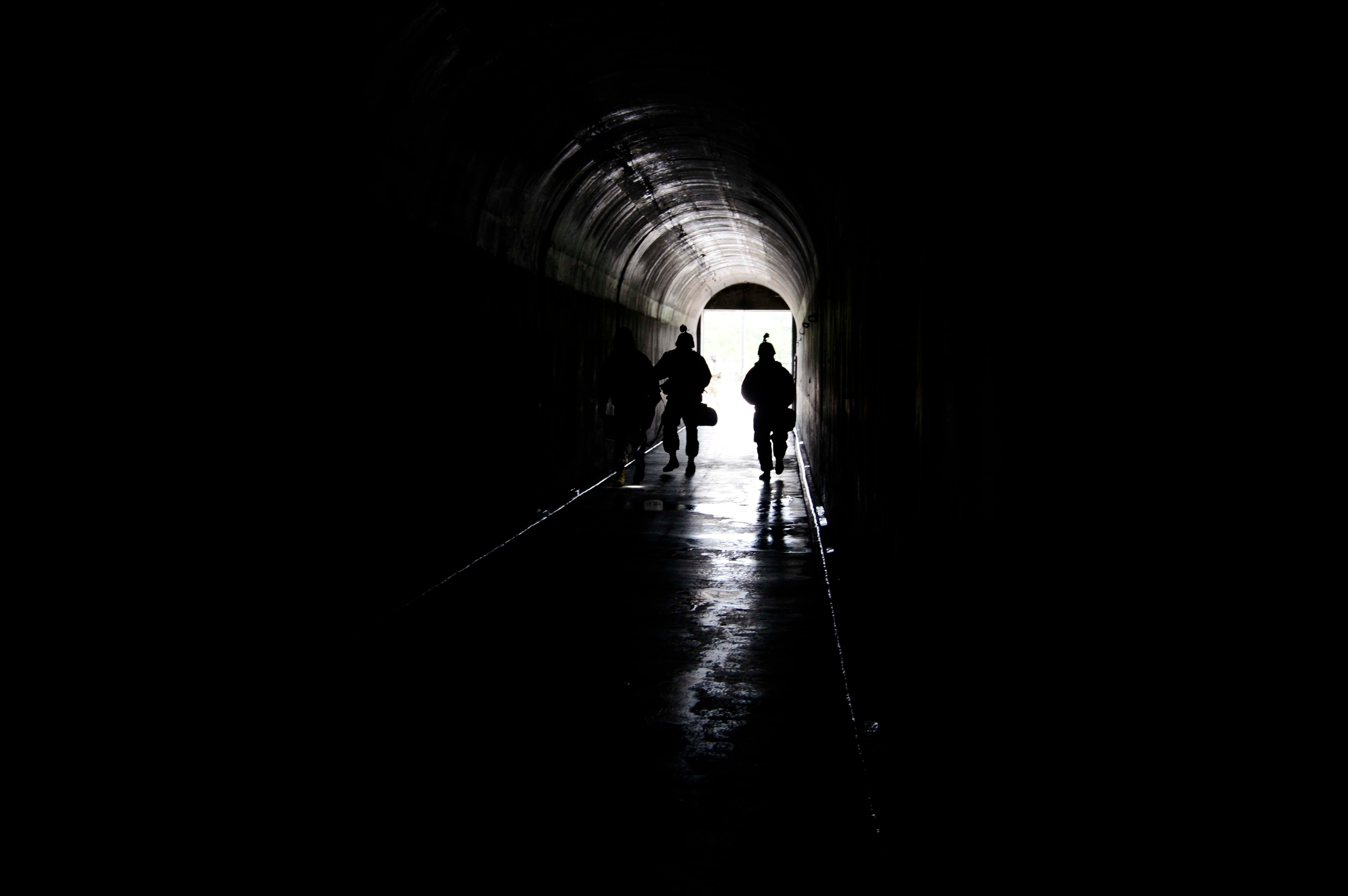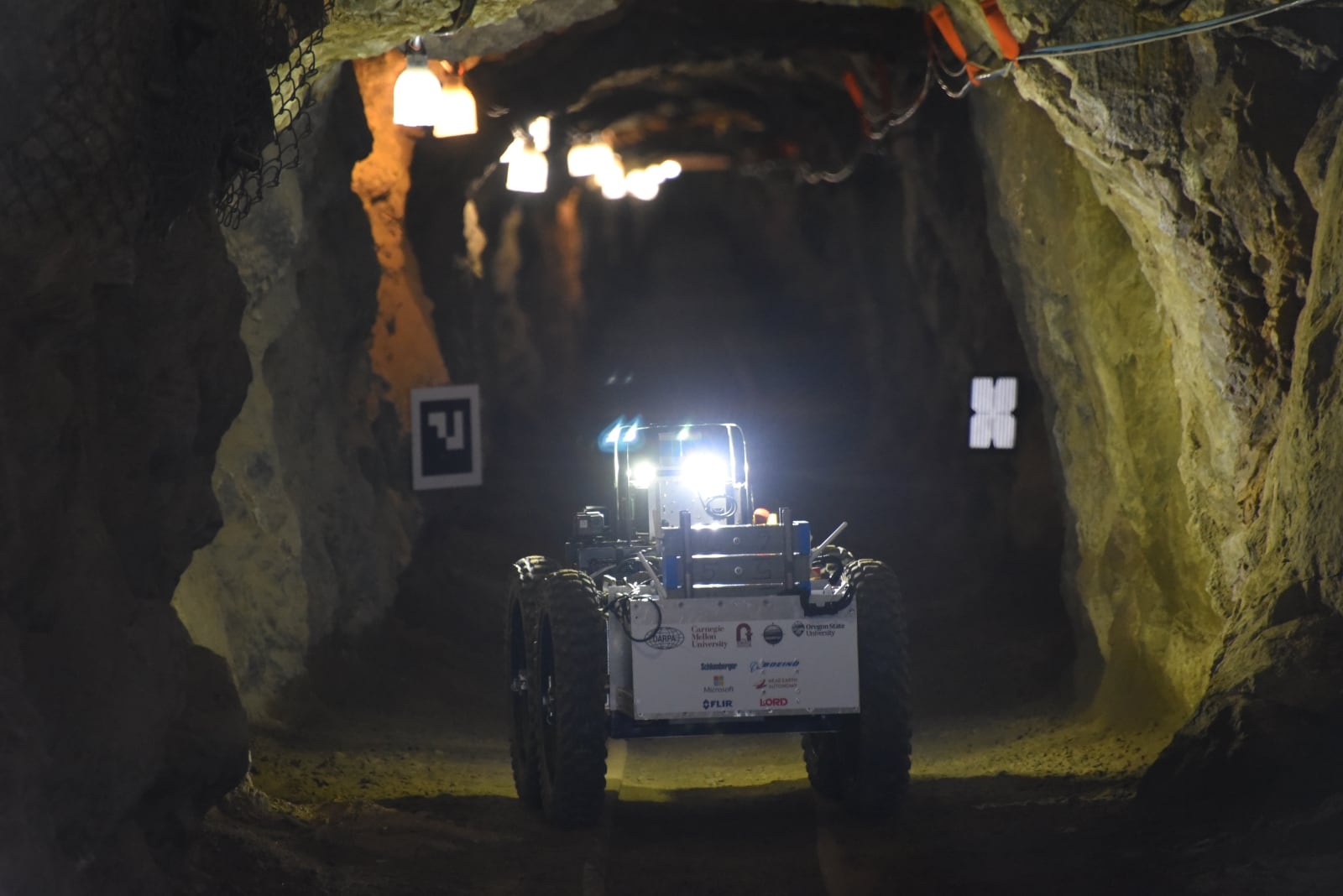In 1969, the Army’s primary interest in caves and tunnels was simple: demolish them.
Devoted to jungle operations, Field Manual FM 31-35 described dense, wet forests. Exploring — much less taking, holding and maneuvering through underground networks — was beyond the scope of how the Army equipped soldiers to fight. In an era where dense foliage proved to be nearly impenetrable, caves were out of the equation.
A follow-up manual, printed in 1982, was even lighter in its treatment, noting caves as a place to “conceal rucksacks” and that opposing forces may travel through networks of tunnels to launch attacks. This edition identified tunnels as a place the Army might be attacked from, but then did nothing to address how these tunnels might be explored, held or exploited.
A third manual — published in 1986 and devoted to counter-guerrilla operations — detailed how to clear and hold tunnels and bunkers, though the emphasis was still on rendering them empty and then destroyed. The unique challenge of tunnels is primarily in finding and clearing them, but the assumption by the manual is that a tunnel network can be closed off or destroyed and neutralized. This threat of violence, in turn, would force occupants of the tunnels to evacuate and lay down arms.
“The last major exposure to this environment was Vietnam, where it was very specific to a tactic by the enemy to basically circumvent American air power, artillery and the ability to track them. So they went underground and then we would send people on the ground,” said John Spencer, chair of urban warfare studies with the Modern War Institute at West Point. “We consider it a special environment, although we faced it in Afghanistan in the early days with all the cave complexes. Most people forget that we lost Bin Laden in the caves of Tora Bora.”
Since Vietnam, and especially since Tora Bora, thinking on caves and tunnels, and what the Army will need to be successful in such a battlefield, has changed.
Today, Army leaders are preparing for battles that will take place underground and are searching for the tools and equipment they will need to win in caves and cities.
For example, a tactical circular published in November 2017 — “Small Unit Training in Subterranean Environments” — explores how war will be executed underground. In a series of diagrams about how squads should maneuver in tight quarters, a small robot always goes first, scouting the way for humans traveling the tunnel after it.
The list of equipment needed for underground operations has expanded from describing the explosives needed to seal off an entrance to detailing lights needed, communication tools, breathing apparatus and suppressors to decrease the noise of firing in the tunnel.
Army leaders need to be able to quickly find survivors, quantify the air quality, and learn what kind of hazards exists in the caves. And, in a break from the past, maybe even find a way to maneuver underground for advantage.
Such tasks will take robot guides, which don’t yet exist.
Enter DARPA.

“We use the subterranean environment because it is so complex and challenging it can really serve as a compelling forcing function to achieve breakthroughs in technology areas,” said Timothy Chung, a program manager in DARPA’s Tactical Technology Office. With those breakthroughs, “we can also do a better job in other complex environments, such as urban environments or potentially even underwater.”
Chung oversees DARPA’s Subterranean Challenge, a project designed to find new ways for the military to map, navigate and search a range of underground environments. This includes caves, tunnels and underground spaces in cities. Designing robots that can go underground, look for objects and report that information back would let the military operate below the surface with far more finesse and ability than it can do so today.
“The recent drop of the [Massive Ordnance Air Blast] bomb in Afghanistan’s Achin district was on a cave complex because we don’t want to deal with these environments,” Spencer said. “We view them as obstacles: don’t go down there unless you have to and, if you do have to, we treat it as a kind of a clearing operation — you’re going to go down there to get the bad guy.”
But caves, tunnels and underground spaces are a difficult place to navigate for humans. Robots can be deployed without risk to the searcher; however, ensuring the military’s technology works in subterranean spots is a struggle.
“One of the cases here is recognizing how much an environment, especially challenging environments, are impediments for concepts like autonomy and perception and robotic mobility and networking,” Chung said. “These spaces continue to be thorns in the sides of technologists.”
In the same way that cellphone or GPS signals get lost in canyons or remote stretches of mountains, caves are what’s half-jokingly referred to as a “passively denied environment.”
Traditional signals, designed to travel through open air and across empty swaths of land, or up to satellites and back to Earth, struggle to penetrate the underground. If there is a singular use case driving the development of autonomous tools in the military, it’s the need to have those machines or vehicles or sensors work where remote control is near impossible.
“The underground environment turns out to be quite a different animal than driving outside,” said Frantisek Brabec, a solutions architect for Robotika International. The Prague-based company fielded a robot in a DARPA integration exercise. “You cannot use GPS; the compass doesn’t really work either because there’s lots of mining equipment, lots of iron. All you are left with is just a few tools that you would normally have available, and communication with the robot is difficult.”
In future battlefields, as well as many today, adversaries could jam parts of the electromagnetic spectrum. In caves, remote control is likely impossible. If a robot is going to go spelunking, it will need to spelunk on its own.
“In the rules, we articulate that tele-operation is not prohibited,” Chung said. “But, frankly, the environments will severely challenge current approaches to tele-operation.”
DARPA’s contest to solve these problems launched in January 2018 with a proposer’s day. In April, seven agency-sponsored teams, as well as two self-funded teams made their way to Idaho Springs, Colorado, for an integration exercise held at the Colorado School of Mines’ Edgar Experimental Mine.
The experimental site has nearly two miles of pathways, with dead ends, interconnected passages, slopes and shafts. The abundance of caves in the United States means DARPA can host a launch event in one, an exercise in another and then a competition in a different cave, so that teams are exploring a new system every time.
A major component of the exercise was determining how well the teams’ robots could locate artifacts, such as cellphones or tools, placed in the site. The organizers even hid “thermal manikins,” which showed up on infrared cameras, to represent survivors or other people that might be encountered underground.
“With our robot, the camera is looking around and it doesn’t make a final determination on whether something is an artifact or not, but it highlights certain potential hits and then when the robot comes back, the human operator validates the sights and reports,” Brabec said. “We had a laser scanning horizontal and on an angle and we measured the way the wheels turn to calculate position.”

What DARPA is ultimately looking for isn’t so much a single platform that can master a specific cave. Instead, DARPA wants industry thinking about a range of platforms that can work across any kind of underground.
One such diversified approach is the “marsupial solution,” where one robot carries other robots on its back (think: smaller quadcopters). Using a main body for endurance with a smaller body for flight and aerial mapping combines the better attributes of two kinds of transportation, but it also requires figuring out how to navigate a cave by air and by ground, and how to get the robots to link back up and then report out meaningful information.
Neither of these are easy problems.
“We are interested in technologies that can deliver what we call actionable situational intelligence in underground environments, not just the delivery of a map, whether 2D or 3D,” Chung said. “What I want is what the operational side is interested in learning. They’re interested in where survivors are located. They’re interested in the quality of air; do I need special equipment before I can maneuver into these spaces? Are there hazards they should be aware of, in addition to all the twists and turns of these environments?”
The Colorado mine allowed teams to explore challenges in a novel environment for the first time, but the true competition comes in August, with a tunnel circuit at the National Institute for Occupational Safety and Health (NIOSH) mine in Pittsburgh.
Subsequent tests in urban and cave environments will come in February and August 2020, respectively, with a final event in August 2021. The locations are withheld until a formal announcement to avoid the possibility that teams over-fit their solutions and designs for a specific environment, rather than creating a versatile tool that can be thrust into the unknown.
“There’s going to be underground in all the cities that have over 1 million people,” Spencer said. “They’re going to the underground infrastructure of sewer systems, telecommunication systems, subway systems. That literally is another level of a map that we don’t even think about. DARPA is pushing us to the simplest capabilities that we need to operate underground.”
Besides the physical events, DARPA is also hosting a parallel virtual challenge, where teams can enter and compete with robots in a simulated environment. Using the kind of modeling one might find in a video game, the virtual machines will navigate hazards — like sudden drop-offs or dense, dusty air — while looking for the same kinds of artifacts strewn through the site.
“We can take everything from models of the existing caves or environmental simulations and have robots experience real world environments just rendered in a virtual context,” Chung said. “We’ve also gone to lengths trying to provide a representative of models for radio frequency propagation in these underground environments. How that comms link works or how the millimeter-wave radar for imaging interacts with the environment — for better or for worse, typically I’d say for worse — to provide an additional level of realism for the virtual competitors to face with their solutions.”
Besides the future needs of soldiers and Marines who might fight their way through underground environments, the competition also considers the interests of the first responder community.
“Conducting rescue operations in subterranean environments presents challenges that are sometimes different from those of any rescue operations above ground,” notes the Army’s Small Unit Training in Subterranean Environments. Saving lives in caves requires many of the same tools and skills as successfully clearing caves from hostile forces, with a different set of options for what to do when people are encountered.
“We are interested in what we can learn when the underground environment is unknown,” Chung said. “We don’t know what the dangers are that lie within. So how can we exercise our technologies in those kinds of operational considerations?”
A half-century after the Army wrote off caves and tunnels in war as primarily targets worth detonating, DARPA is challenging industry to find a way to navigate through that unknown. If there is a path that can make underground warfare safer for humans, it is one that will be trail-blazed by robots.
Kelsey Atherton blogs about military technology for C4ISRNET, Fifth Domain, Defense News, and Military Times. He previously wrote for Popular Science, and also created, solicited, and edited content for a group blog on political science fiction and international security.








